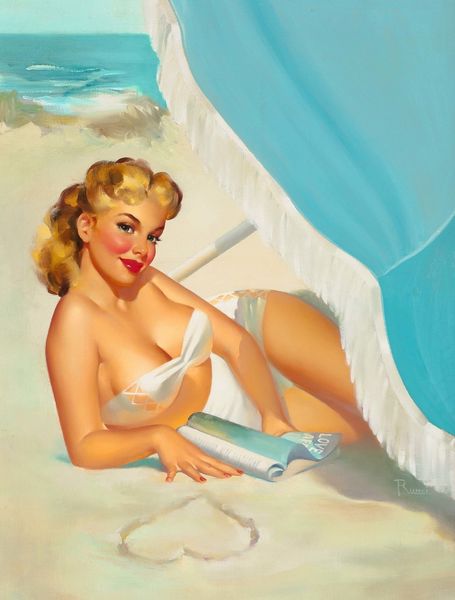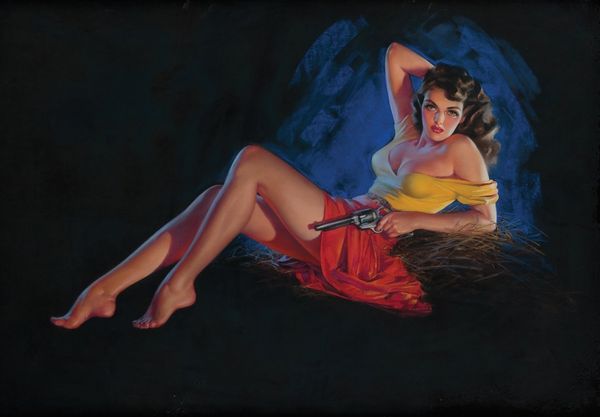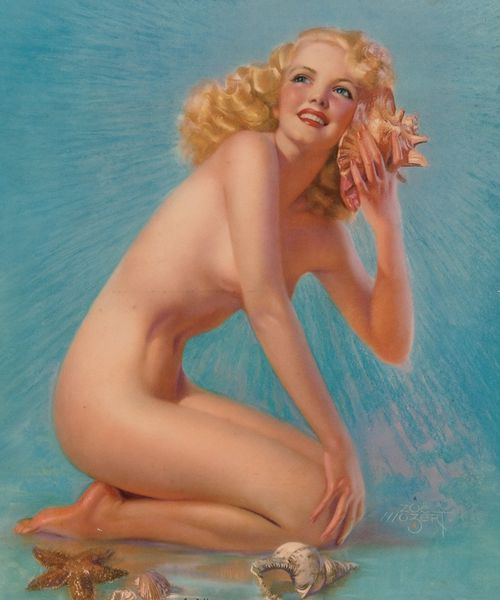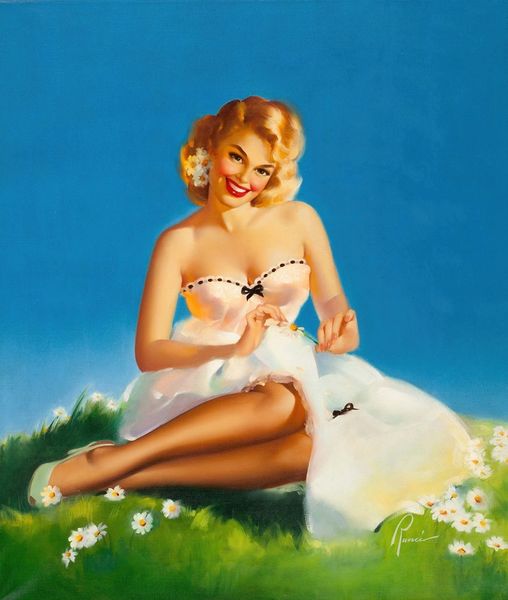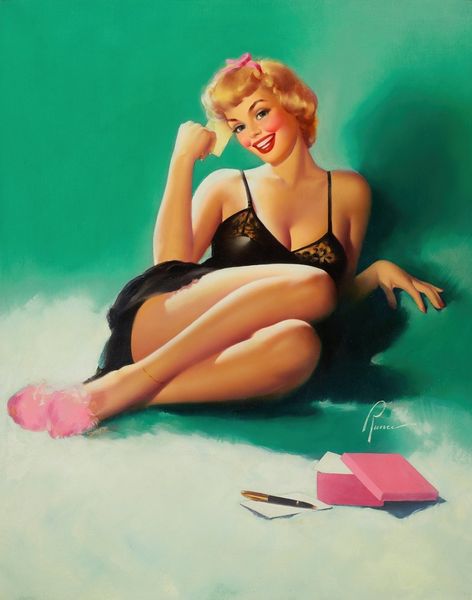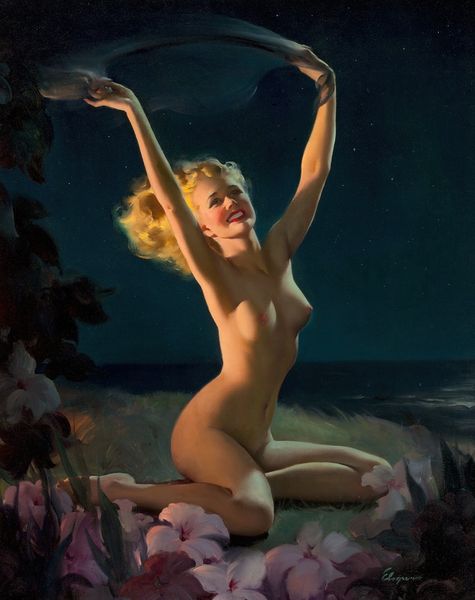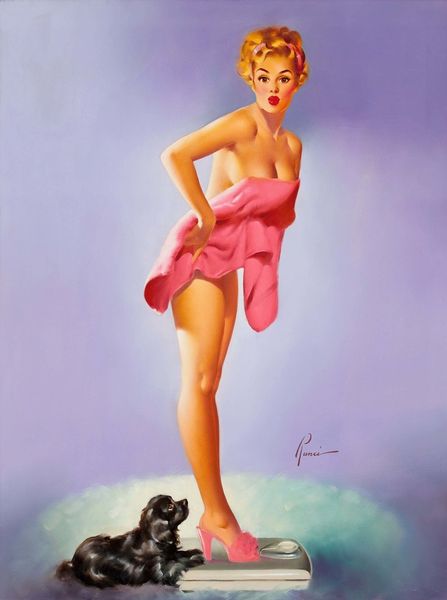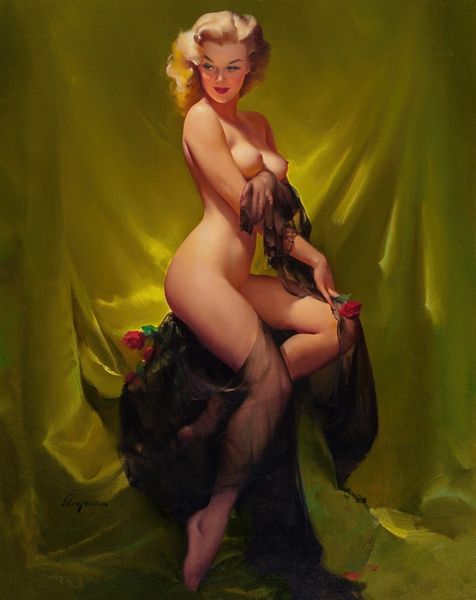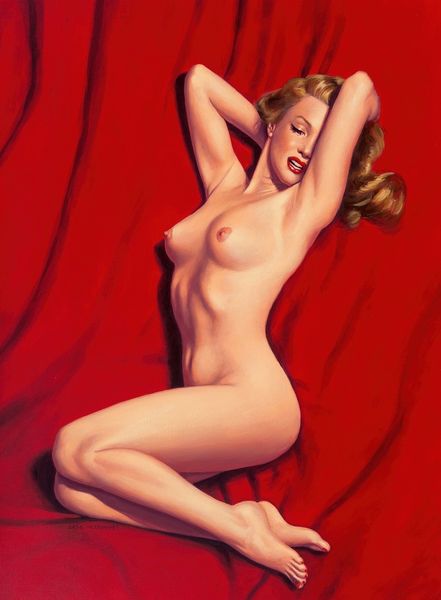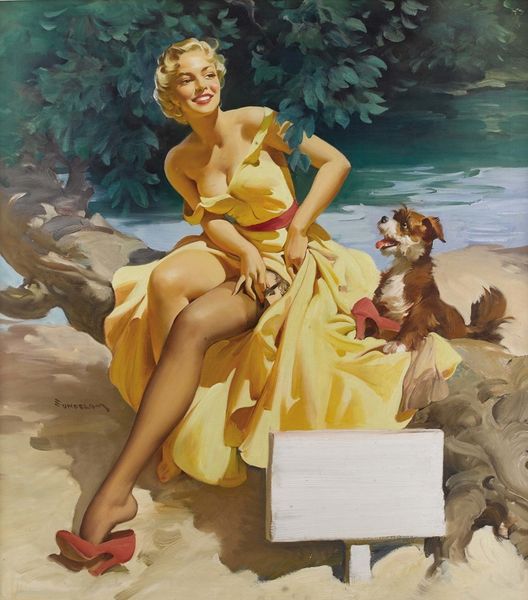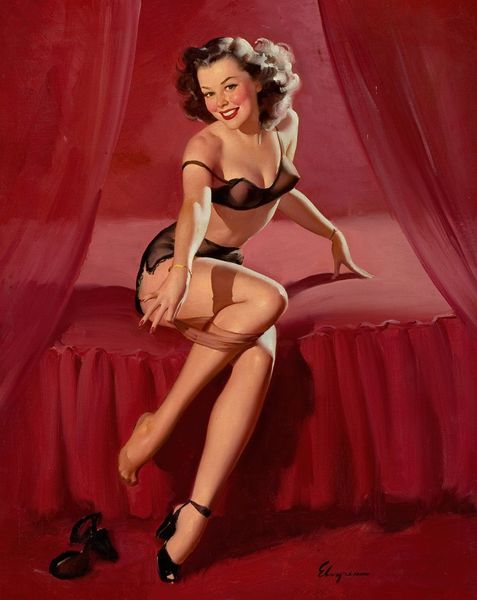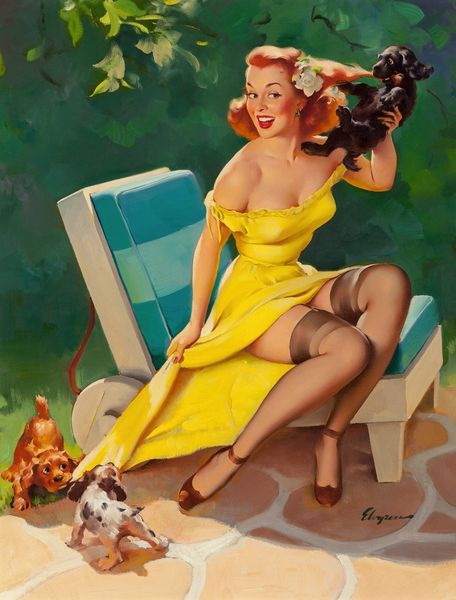
Copyright: Modern Artists: Artvee
Editor: This is Edward Runci's "Haystack Playmate" from 1955, done with oil paints. It's definitely got that classic pin-up vibe. It’s striking how she is posed; I find the way the light glows to be kind of dreamlike. What’s your interpretation of it? Curator: It’s fascinating to see this painting within its historical context. Mid-1950s America had this idealized vision of women. These pin-up images are definitely part of the story, yet they are incredibly loaded. I always wonder, how much of this is the male gaze versus a woman reclaiming agency? Does she have the upper hand here? Editor: Reclaiming agency? It seems fairly typical of that pin-up genre. Is it really about female empowerment at all? Curator: That's the question, isn't it? The seemingly innocent “girl next door” is intentionally hyper-sexualized, right? But, looking at her expression—she’s not coy. There's a knowing look, and that shifts the power dynamic a little for me. Does it for you? What about the role the lamp plays? Editor: That's true. There's an awareness there. Maybe it's not *just* an objectifying image. That lamp almost feels like she's controlling the spotlight. Like she’s performing, or in charge. Curator: Exactly. And when we look at these images, it is always helpful to bring to light the hidden layers and inherent contradictions, challenging simplistic readings of gender roles. These depictions were part of a much larger power game! Editor: I guess I never thought about the power dynamic so explicitly, I just saw the surface. Thanks for that deeper dive. Curator: My pleasure. It’s in understanding those complex historical narratives that we start to unpack these images. Hopefully, by continuing this dialogue we will eventually disrupt any latent misogyny in our perception of this artwork.
Comments
No comments
Be the first to comment and join the conversation on the ultimate creative platform.
